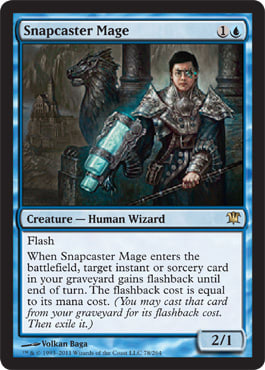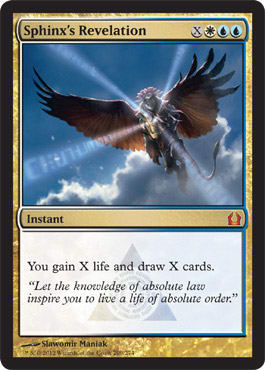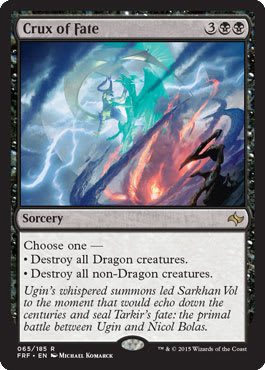I confess I didn’t do the best job of following the Pro Tour this time around. I’m the early-to-bed-and-early-to-rise type, so try as I might to stay up past midnight to watch the action in Brussels, I couldn’t quite make it through the broadcast. I did manage to watch some of the replay coverage—I caught a few Drafts and watched Patrick Chapin receive a game loss on camera for failing to reveal with Ajani, Mentor of Heroes—but the Top 8 was spoiled for me before I even was able to watch it. By the time I woke up on Sunday morning, the news had already broken: Red Deck Wins the Pro Tour.
Red Aggro ? Dragons of Tarkir Standard | Martin Dang, First at Pro Tour Dragons of Tarkir
- Creatures (15)
- 1 Frenzied Goblin
- 1 Lightning Berserker
- 2 Goblin Rabblemaster
- 4 Foundry Street Denizen
- 4 Monastery Swiftspear
- 3 Zurgo Bellstriker
- Spells (25)
- 1 Become Immense
- 4 Atarka's Command
- 4 Lightning Strike
- 4 Stoke the Flames
- 4 Wild Slash
- 4 Dragon Fodder
- 4 Hordeling Outburst
- Lands (20)
- 1 Forest
- 10 Mountain
- 1 Temple of Abandon
- 4 Mana Confluence
- 4 Wooded Foothills
- Sideboard (15)
- 1 Destructive Revelry
- 4 Eidolon of the Great Revel
- 1 Goblin Heelcutter
- 2 Goblin Rabblemaster
- 2 Hall of Triumph
- 4 Roast
- 1 Scouring Sands
Frankly, I wasn’t surprised to see that the lone red aggro deck in the Top 8, piloted by Denmark’s Martin Dang, had come out on top. Aggro decks had dominated StarCityGames Syracuse the previous weekend, and the most popular deck in the Top 8 was U/B Control, a deck that Mono-Red could easily overpower. Though renowned control player Shota Yasooka won Game 2 of the finals on the back of Icefall Regent while Dang struggled to hit his land drops, the red mage maintained command (Atarka's Command, that is) for the remainder of the match, emerging victorious after just thirty minutes of gameplay. It was a “classic match of Magic,” as Rich Hagon so aptly put it, a matchup I understood in and out, having played both sides.
Mostly, I’ve played the control side because I happen to have a red mage for a testing partner. Simon has been playing Magic since middle school, and he claims that his first attempts at deck-building all involved throwing together as many burn spells as possible. Fourteen years later, you can still find him tapping Mountains at Friday Night Magic, but he’s grown up to be a more discerning deck designer, not to mention one of the most methodical aggro players I’ve ever met. Simon’s goal each Standard season is to build a better red deck, so it’s not uncommon for me to find new decklists in my inbox around the release of a new set. Before Dragons of Tarkir even hit stores, Simon was already speculating about the utility of Atarka's Command in a Mono-Red Aggro list. Here’s a draft he sent me about two weeks ago, which contains all the core elements of Dang’s winning list.
Atarka Red ? Dragons of Tarkir Standard | Simon Irving, Test Deck, March 2015
- Creatures (16)
- 3 Foundry Street Denizen
- 4 Goblin Rabblemaster
- 4 Mardu Scout
- 4 Monastery Swiftspear
- 1 Zurgo Bellstriker
- Spells (23)
- 4 Atarka's Command
- 4 Lightning Strike
- 4 Stoke the Flames
- 4 Wild Slash
- 3 Hordeling Outburst
- 4 Dragon Fodder
- Lands (21)
- 11 Mountain
- 2 Forest
- 4 Temple of Abandon
- 4 Wooded Foothills
- Sideboard (15)
- 4 Destructive Revelry
- 4 Eidolon of the Great Revel
- 3 Outpost Siege
- 4 Roast
It took a few weeks of testing for Simon to warm up to Zurgo Bellstriker, accept Mana Confluence as a necessary evil, and ignore his impulse to run four main-decked Goblin Rabblemasters in a metagame rife with Wild Slashes. We discussed sideboard options and debated the relative merits of various red 1-drops. (Simon still can’t get behind Lightning Berserker.) There’s one crucial difference in our approaches to deck-tuning however: I understand the constraints of the metagame, but I don’t understand how to build a proper red deck nearly as well as Simon does.
The Pros and Cons of Flexibility
In the most recent episode of The Girlfriend Bracket, my cohost Erin Campbell commended me for my flexibility with regard to deck choice. When it comes to Standard, I’ll play just about anything that I feel is well-positioned. In the last six months, I’ve finished in the money with Mardu Midrange, Abzan Aggro, and R/W Tokens; in the last year, I’ve dabbled in Esper Control, Boss Sligh, and Jeskai Tempo. My three fellow podcasters have strong deck preferences—Katie and Kriz are card-carrying blue mages; Erin loves midrange decks and graveyard interactions—and seated alongside them, I often feel as though I don’t have an identity as a Magic player.
Truth be told, when I first started playing Magic in 2012, I had much stronger deck preferences. Playing Constructed at the time meant attacking with Geist of Saint Traft, flashing back burn spells with Snapcaster Mage, and using Restoration Angel for fun and profit. I loved the game, but I wanted to win, and I wasn’t winning yet. I was inexperienced, of course, and my play skill wasn’t nearly up to snuff, but I also clung to my favorite cards and archetypes too desperately, even after they had fallen out of favor.
Then I discovered Limited, and everything changed. I drafted decks with efficient curves and started using my mana more efficiently. I allowed my creatures to engage in combat with other creatures instead of just burning blockers out of the way or relying on board wipes for stability. Limited gameplay helped me become a much stronger aggro player, but the very principles of drafting—knowing the format and staying open—started to influence my Constructed play. Why should I limit myself to playing tempo in Constructed, especially if tempo wasn’t practical at the time? I had demonstrated through my Limited play that I could handle anything the format threw at me.
Playtesting helped me become more versatile as well. Testing Standard with Simon always meant playing some grindy midrange or control deck against his latest mono-red brew. I played Esper Control, and he swore every time I resolved a Sphinx's Revelation. I played Abzan Midrange, and he swore every time I resolved a Siege Rhino. Sure, he was learning to play his archetype of choice against its worst matchups, but I was expanding my repertoire and gaining a deeper knowledge of the format. Playing midrange against Simon made me feel that I could play midrange against anyone, so I did, and it paid off.
Nearly three years after Simon taught me to play Magic, I consider myself a fairly competent Standard player. Given enough knowledge of the metagame, I can play aggro or midrange, tempo or control, with few issues. But I don’t have the kind of deep knowledge and extensive experience with an archetype that leads to long-term success. I can’t reinvent the blue deck every season, just as Simon reinvents the red deck. Just as I do in Draft, I make educated guesses about what everyone else is playing (or not playing, as the case may be) and go with the flow, hoping things will work out in my favor.
Mastery of the Unseen
Often, I’ve been told that there are two approaches to mastering a format in Magic: You either have to learn to play one deck very well or learn a little bit about every deck in the format. One isn’t necessarily better than the other; comparing specialists and generalists is like comparing apples and oranges—or, let’s say, Tom Ross and Brad Nelson. If you take one thing away from this article, let it be this: Don’t laud the generalist at the expense of the specialist. Becoming a specialist takes time, but for some Magic players, it’s the most rewarding way to play the game. It took Simon years to become the kind of red mage he wanted to be. It took Adrian Sullivan twenty-two years to Top 8 a Pro Tour, but he did it, demonstrating his mastery of U/B Control.
Being a generalist seems to be working out for me. After just two years of playing competitively, I’ve cashed multiple tournaments and know my way around Standard. But when it comes time to master other Constructed formats—Modern, Legacy, perhaps even Vintage someday, if I’m up to it—I don’t think I can fall back on my Limited knowledge. Instead, I’m remembering how I used to soak up information before I played my first game of Magic—back in college, when I would learn everything there was to learn about post-punk music or Russian literature. I’m remembering all the fun I had with Snapcaster Mage and want to relive those first few months we spent together. After my misadventures with U/R Delver (R.I.P. Treasure Cruise), I’m ready to pick up new Modern and Legacy decks and start specializing.





























